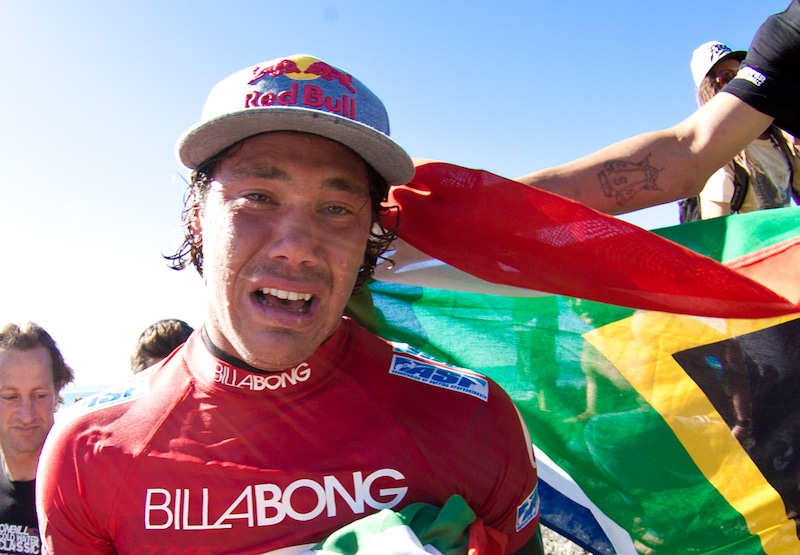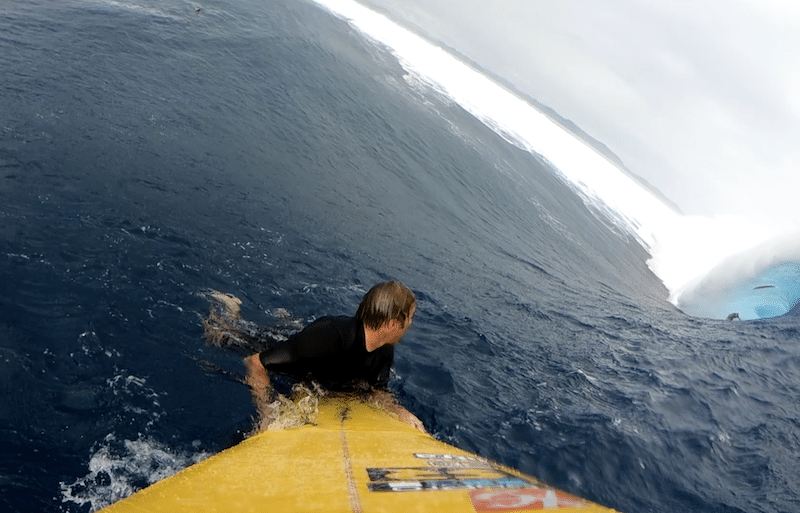And other fascinating Olympic surf scenarios!
Okay, we’re not going to the Olympics, but some surfers are going! Forty, to be exact. It’s going to be so exciting. I am the kind of person who reads Olympic qualification rules. This is my confession.
The US Olympic Trials event is widely considered the fastest swim meet in the world. Held ahead of the summer games, the trials meet decides the US Olympic team. The top two finishers in each event go to the Olympics. Everyone else goes home. There are tears of elation and crushing disappointments. It’s all very high drama.
If you were hoping for a similarly tear-filled dénouement for surfing, you will be disappointed. Sorry! But the selection process does guarantee some excellent subplots for the 2019 CT events. Spicy!
Here’s your handy guide to surfing’s Olympic selection, so you can impress your friends with your arcane knowledge. You can actually like a pro in the parking lot next weekend. Friends always enjoy that kind of thing.
Details!
First, some details. Twenty women and twenty men comprise the Olympic field in Tokyo. Each national committee may send a maximum of two men and two women. That’s a team of four total, if you’re trying to keep track at home. Thankfully, there is no complicated math by which countries receive different allocations based on their standings in the world rankings. (Hi, cycling) Four. You get four.
If you want to surf the Olympics, you must also surf the 2019 and 2020 World Surfing Games. Qualifying standards for the World Games appear to be still under construction. I did not see them, in any case. Maybe I did not look hard enough.
World Tour Spice!
The selection process begins with the 2019 CT standings. Fuck yeah! Now, we’re getting somewhere.
The first ten men — and the first eight women — in the CT rankings in December 2019 go to the Olympics. That sounds simple, but remember the part where each country may only send two surfers? If you’re from the US, Australia, or Brazil, you’ll need to be among the top two ranked surfers from your country on the CT. This is where the fun begins.
Let’s pretend that the women’s Olympic selection were right now, today. Steph Gilmore and Nikki Van Dijk would represent Australia. Two-time world champion Tyler Wright would be left out in the cold. Tati West snags one of Brazil’s two slots, while Silvana needs to keep an eye on her overall ranking to stay inside the selection window. I’m sure Silvana was stoked to welcome her new… teammate.
For the US team, meanwhile, Lakey Peterson and Carissa Moore would take the honors, but Caroline Marks is oh-so-close to overtaking Moore. The joint marketing from Red Bull of Moore and Marks gets a little extra zesty in this context.
The plot thickens significantly for the US team if Courtney Conlogue reclimbs the rankings after her recent injury. Or if Malia Manuel were to make a sudden run up the rankings. At the moment, the judges look to love what Lakey’s selling, but if that changed, the door might just swing open.
On the men’s side of the draw, the three-way battle among the Brazilians Filipe Toledo, Italo Ferreira, and Gabriel Medina is going to be lit as fuck. If it were up to me, I’d say send all three. But I don’t make the rules around here.
The US selection, based on current rankings, would be Zeke Lau and Griffin Colapinto, with Kolohe Andino breathing down Colapinto’s neck. Florence is ranked fourth among the Americans at the moment, which isn’t exactly where he’s going to want to be next December. Surely, there’s an Olympics bonus in his contract.
Now pretend you’re Jordy Smith. You’re psyched, because you don’t have to worry about beating out three other guys from South Africa. But you still have some work to do. Because only ten men receive selection from the CT, Jordy Smith would miss qualifying based on current rankings. The ten slots available from the CT are exhausted before we’d reach his ranking, which is currently tied for 25th. Bummer, dude.
But Smith is not out of luck! He could still qualify without climbing the pesky CT rankings. Read on, for how!
Second chances!
Four slots for men — and six for women — are on offer to the top finishers in the 2020 ISA World Surfing Games. So if Jordy were to finish in the top four at the World Games, he could still qualify, even if he were outside the CT selection window. This is also a potential qualifying route for women such as Silvana, Pauline Ado, or Bianca Buitendang.
If your country has already exhausted its allocation on the CT — like say, the US or Australia — you can’t qualify by way of the World Games. Basically, this is the route for QS and lower-ranked CT surfers whose countries have not yet qualified two athletes.
Continents!
Continents, we have them. They number five.
One surfer from each of the five continents will be eligible for Olympic selection. Who will it be? The highest finisher from each continent at the 2019 ISA World Surfing Games will qualify. For the Americas, the 2019 Pan-American Games serve as the selection event.
There’s a catch — they must finish with the top 30 overall at the World Games. So, no Jamaican bobsled action, basically.
Here again, the two-surfer quota per country comes into play. The qualifying standards form a hierarchy with the CT at the top. If a country qualifies two surfers through the CT rankings, that’s it! There are no other opportunities.
These additional qualifying routes offer a route for countries with fewer top level pro surfers to send athletes to the Olympics. Maybe there’ll be an upset! That could be fun times.
Locals Only!
Two surfers from Japan will be included in the event, if they do not qualify by any other route. If Kanoa Igarashi failed to qualify via the CT rankings, a high finish at the ISA Surfing World Games, or as a continental qualifier, he could still pick up the local ticket.
If Igarashi does qualify through the standard routes, the extra slot gets thrown to the ISA Surfing World Games and an additional athlete from the Games can qualify. So if you’re from a country without CT athletes, you’re definitely hoping Igarashi finishes high in the CT rankings.
There. You are all smarter now! You can impress your friends with all your knowledge. I confess that I love few things more than Olympic selection drama, so I will totally enjoy next year’s CT even more than usual. Maybe you will too!







